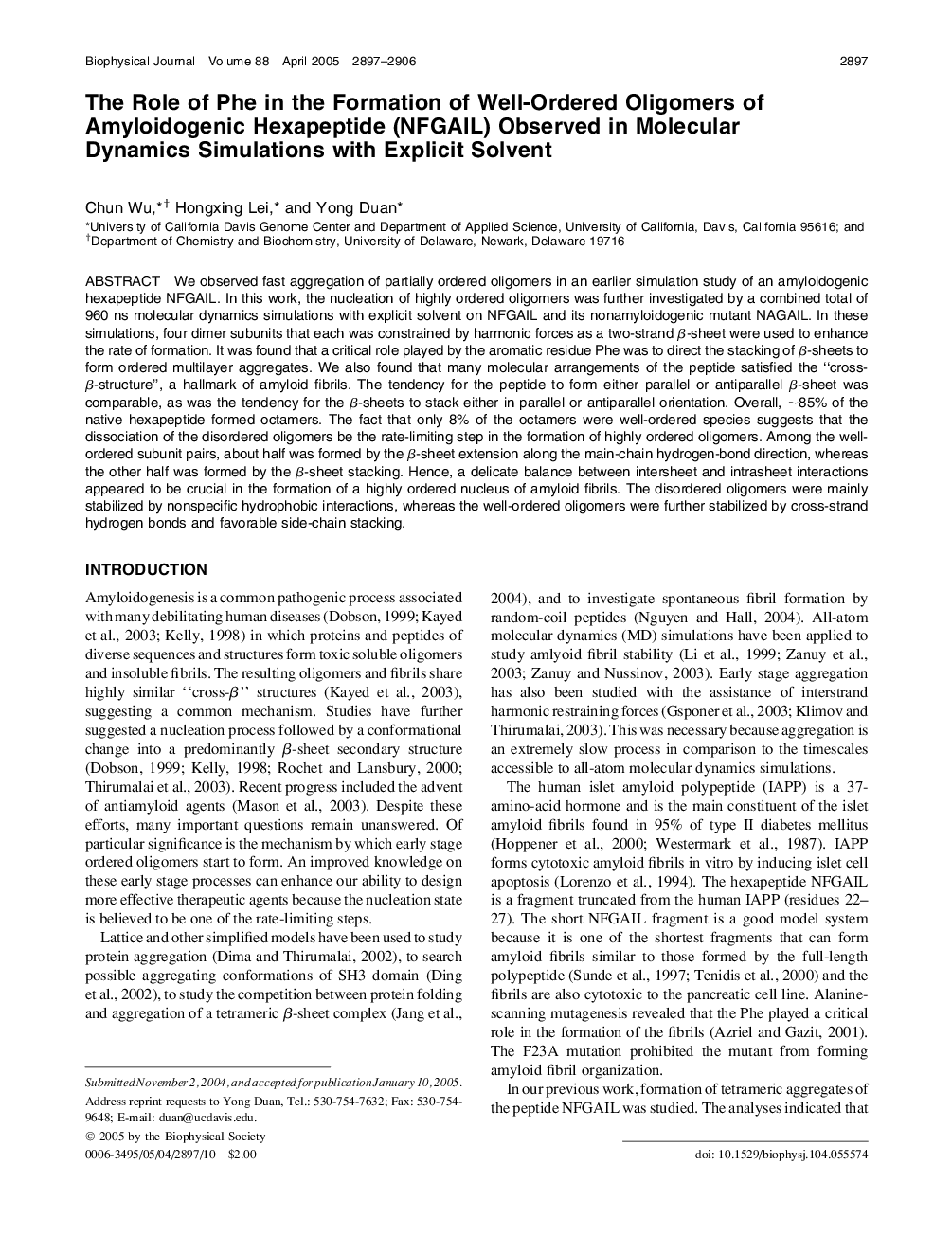| کد مقاله | کد نشریه | سال انتشار | مقاله انگلیسی | نسخه تمام متن |
|---|---|---|---|---|
| 1959582 | 1057941 | 2005 | 10 صفحه PDF | دانلود رایگان |

We observed fast aggregation of partially ordered oligomers in an earlier simulation study of an amyloidogenic hexapeptide NFGAIL. In this work, the nucleation of highly ordered oligomers was further investigated by a combined total of 960 ns molecular dynamics simulations with explicit solvent on NFGAIL and its nonamyloidogenic mutant NAGAIL. In these simulations, four dimer subunits that each was constrained by harmonic forces as a two-strand β-sheet were used to enhance the rate of formation. It was found that a critical role played by the aromatic residue Phe was to direct the stacking of β-sheets to form ordered multilayer aggregates. We also found that many molecular arrangements of the peptide satisfied the “cross-β-structure”, a hallmark of amyloid fibrils. The tendency for the peptide to form either parallel or antiparallel β-sheet was comparable, as was the tendency for the β-sheets to stack either in parallel or antiparallel orientation. Overall, ∼85% of the native hexapeptide formed octamers. The fact that only 8% of the octamers were well-ordered species suggests that the dissociation of the disordered oligomers be the rate-limiting step in the formation of highly ordered oligomers. Among the well-ordered subunit pairs, about half was formed by the β-sheet extension along the main-chain hydrogen-bond direction, whereas the other half was formed by the β-sheet stacking. Hence, a delicate balance between intersheet and intrasheet interactions appeared to be crucial in the formation of a highly ordered nucleus of amyloid fibrils. The disordered oligomers were mainly stabilized by nonspecific hydrophobic interactions, whereas the well-ordered oligomers were further stabilized by cross-strand hydrogen bonds and favorable side-chain stacking.
Journal: - Volume 88, Issue 4, April 2005, Pages 2897–2906